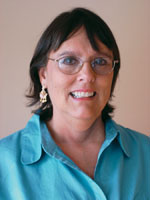
Hands-on, Practical Guidance for Educators
From math,
literacy, equity, multilingual learners, and SEL, to assessment, school counseling,
and education leadership, our books are research-based and authored by experts
on topics most relevant to what educators are facing today.
Helping Deaf and Hard of Hearing Students to Use Spoken Language
Foreword by Mary Ellen Nevins
"I have a student who is hard of hearing: How do I assist the student in speaking?"
The authors' model of auditory, speech, and language development has been used successfully with the deaf and hard of hearing population, in training preservice teachers, and in workshops and presentations for practicing professionals. This authoritative reference introduces the authors' developmental model and provides:
- Effective techniques and strategies specifically for children in the primary grades
- Objectives, questions, summaries, case studies, problems, bibliographies, and appendices within each chapter
- Accessible background information on the anatomy of the ear and why hearing disabilities exist
- Grade Level: PreK-12, Elementary
- ISBN: 9781412927338
- Published By: Corwin
- Year: 2007
- Page Count: 224
- Publication date: May 31, 2007
Price: $46.95
For Instructors
When you select 'request review copy', you will be redirected to Sage Publishing (our parent site) to process your request.



